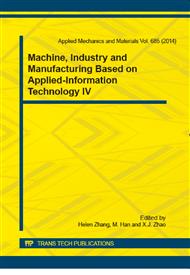p.603
p.609
p.614
p.618
p.623
p.630
p.634
p.638
p.642
Syntax Analysis: The Left-Most-Derivation-and-Reduction Trees and its Compare with the LR Parsing Methods
Abstract:
A new syntax analysis method is presented, called as “left-most-derivation-and-reduction trees.” With the new way, the syntax analysis is carried out under the direction of the syntax trees, while in the traditional syntax analysis, the syntax tree is obtained when the analysis has finished. Furthermore, through the point of view of the “left-most-derivation-and-reduction trees”, the properties of the LR parsing method is newly surveyed and explained in an easier, simpler, and more directed way. Finally, the new way is expected to get further development in future.
Info:
Periodical:
Pages:
623-629
Citation:
Online since:
October 2014
Authors:
Price:
Сopyright:
© 2014 Trans Tech Publications Ltd. All Rights Reserved
Share:
Citation:


